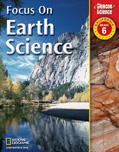1.
6.c A) 100 years B) 10 years C) 10,000 years D) 1,000 years 2.
5.e A) a population B) an ecosystem C) a biome D) the biosphere 3.
5.c A) a fungus B) grass C) a dead tree D) a grasshopper 4.
5.e A) sunlight B) a beetle C) a pine tree D) a raccoon 5.
5.a A) A rabbit is eaten by a wolf, which is eaten by grass. B) A wolf is eaten by grass, which is eaten by a rabbit. C) Grass is eaten by a rabbit, which is eaten by a wolf. D) A rabbit is eaten by grass, which is eaten by a wolf. 6.
5.e A) temperature B) sunlight C) air D) water 7.
5.a A) mammals B) consumers C) amphibians D) producers 8.
5.c A) An organism can serve as a source of food in a community. B) An organism can live with other organisms in a community. C) An organism can depend on other organisms to build its home. D) An organism can reproduce with members of its community. 9.
6.a A) binding B) fission C) fusion D) radiation 10.
5.c A) habitat B) niche C) biotic potential D) carrying capacity 11.
5.d A) moss B) rice C) cactus D) corn 12.
5.a A) omnivores B) producers C) carnivores D) consumers 13.
6.b A) non-renewable B) endangered C) conserved D) renewable 14.
5.c A) predator B) producer C) consumer D) decomposer 15.
5.a A) Consumers produce their own food. B) Energy is never converted from one form to another. C) Energy can be transferred form one organism to another. D) Producers never make their own food. 16.
6.b A) increased rainfall B) species extinction C) decreased CO2 levels D) increased O2 levels 17.
5.d A) tundra B) temperate rain forest C) desert D) temperate deciduous forest 18.
5.e A) population B) community C) ecosystem D) biome 19.
5.c A) environment B) niche C) habitat D) territory 20.
5.a A) niche B) habitat C) environment D) species 21.
5.a A) water B) sugar molecules C) evaporation D) fewer offspring 22.
5.e A) food chains B) biotic factors C) abiotic factors D) carbon cycles 23.
5.e A) nitrogen cycles B) abiotic factors C) food webs D) biotic factors 24.
6.a A) nuclear B) wind C) fossil fuel D) biomass 25.
6.a A) wood B) rocks C) garbage D) ethanol 26.
6.b A) clean energy sources B) alternative energy resources C) inexpensive resources D) renewable resources 27.
4.a A) It evaporated. B) It went through chemosynthesis. C) It oxidized. D) It became a biotic factor. 28.
6.c A) increase production B) build more plants C) lower costs D) reduce packaging 29.
6.a A) natural gas B) coal C) nuclear D) oil 30.
5.b A) Nitrogen is absorbed by plants when they die. B) Nitrogen goes from the atmosphere to the soil. C) Nitrogen is produced by living organisms. D) Nitrogen is removed from soil by animal wastes. 31.
6.c A) coal B) hydroelectric C) nuclear D) petroleum 32.
5.b A) nitrogen B) carbon dioxide C) oxygen D) water vapor 33.
6.a A) petroleum B) oil C) coal D) natural gas 34.
6.a A) oil B) coal C) petroleum D) natural gas 35.
6.a A) solar B) wind C) petroleum D) geothermal 36.
5.e A) photosynthesis B) the number of carnivores C) latitude D) the amount of humus in the soil 37.
4.a A) decomposition B) precipitation C) photosynthesis D) symbiosis 38.
6.b A) Animal B) Fish C) Plant D) Human 39.
5.c A) niche B) community C) population D) ecosystem 40.
5.c A) Preservation B) human C) grass D) dog 41.
5.b A) as long as you have been alive B) billions of years C) probably less than one year D) 15 minutes 42.
5.a A) copy chromosomes B) release energy C) produce offspring D) store energy 43.
5.a A) Producers use sunlight. B) Ecosystems change over time. C) Energy moves through an ecosystem. D) Abiotic factors affect populations. 44.
6.a A) Recycling is a way to reuse materials rather than obtain new ones. B) Recycling won't help humans meet future needs. C) Recycling takes more energy than obtaining the new material. D) Recycling increases the amount of mineral resources needed every year. 45.
6.b A) expensive B) precious C) renewable D) nonrenewable 46.
6.a A) reduce B) retire C) reuse D) recycle 47.
5.c A) omnivores B) moonlight C) sunlight D) sulfur molecules 48.
5.a A) water B) food C) sunlight D) heat 49.
6.a A) supply is limited B) generates only small amounts of energy C) produces dangerous waste D) creates air pollution during fission 50.
5.c A) evaporate B) reproduce C) survive D) photosynthesize 51.
5.e A) biotic potential B) limiting factors C) symbiosis D) habitats 52.
5.d A) temperate deciduous forest B) tropical rain forest C) taiga D) desert 53.
5.d A) taiga B) tundra C) temperate deciduous forest D) grasslands 54.
5.d A) The soil thaws during the summer. B) The soil contains permafrost. C) The soil contains little dead vegetation. D) The soil is thin and gravelly. 55.
5.a A) those in the last link B) those in the first link C) those in the middle links D) All have the same amount of available energy. 56.
6.b A) cotton B) water C) trees D) gold 57.
5.c A) carnivores B) producers C) water D) soil 58.
5.b A) oxygen B) nitrogen C) water D) carbon 59.
6.b A) sunlight B) automobile C) water D) tree 60.
5.d A) zebra B) kangaroo rat C) moose D) spotted owl







